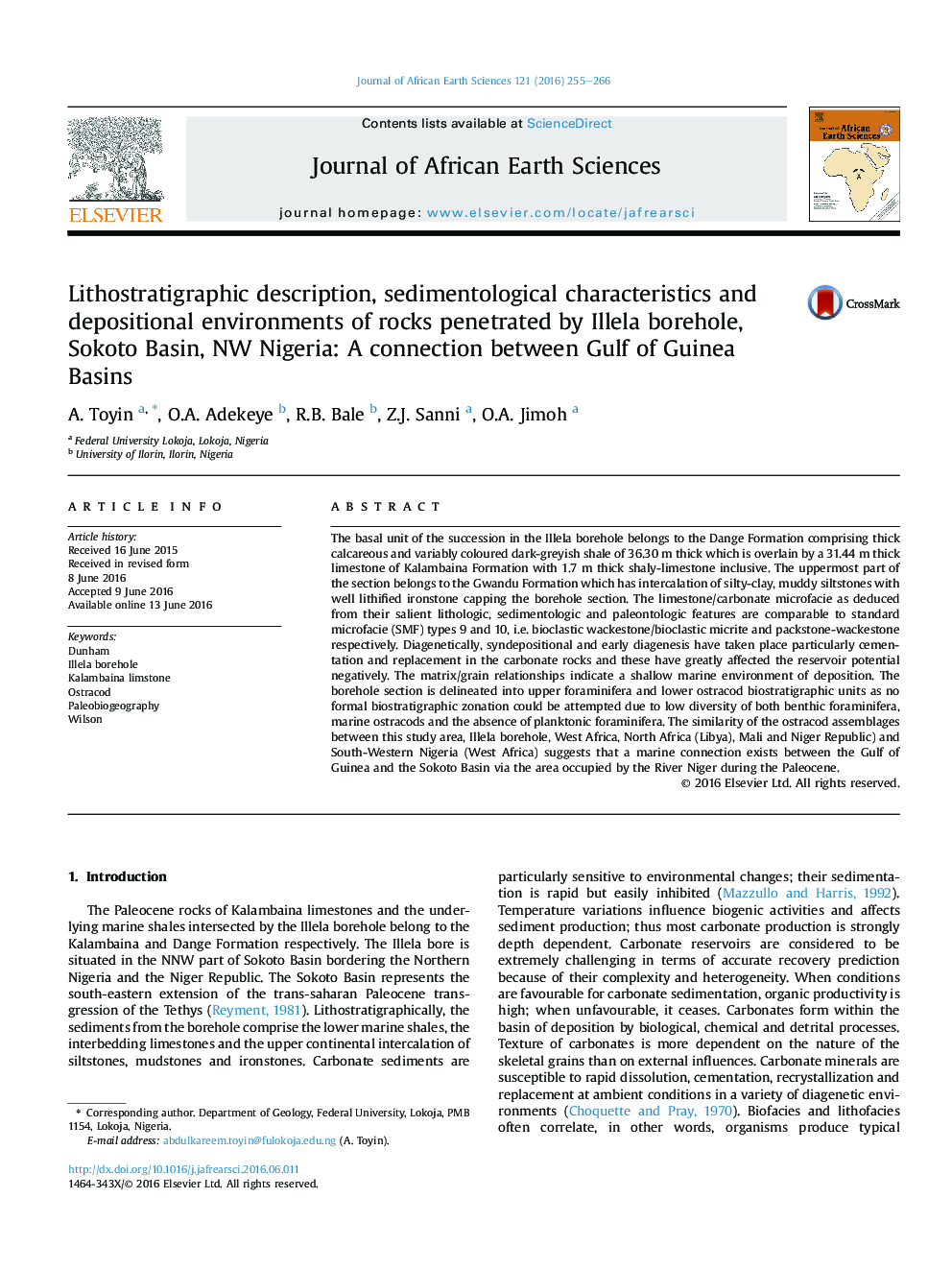| Article ID | Journal | Published Year | Pages | File Type |
|---|---|---|---|---|
| 4728253 | Journal of African Earth Sciences | 2016 | 12 Pages |
•The carbonate microfacies identified belong to the standard microfacie types 9 and 10 of Flugel 1972, Turcker and Wright 1990: which are bioclastic wackestone/bioclastic micrite and packstone-wackestone respectively.•The textures and structures preserved in the carbonate rock revealed that early diagenetic processes have taken place which has affected the reservoir quality of the carbonate rocks.•Presence of both benthic foraminifera and ostracod with absence of planktonic foraminifera.•The microfacies present and benthic foraminifera are indicative of shallow water marine environment.•The Illela borehole is delineated into upper foraminifera and lower ostracod biostratigraphic units.
The basal unit of the succession in the Illela borehole belongs to the Dange Formation comprising thick calcareous and variably coloured dark-greyish shale of 36.30 m thick which is overlain by a 31.44 m thick limestone of Kalambaina Formation with 1.7 m thick shaly-limestone inclusive. The uppermost part of the section belongs to the Gwandu Formation which has intercalation of silty-clay, muddy siltstones with well lithified ironstone capping the borehole section. The limestone/carbonate microfacie as deduced from their salient lithologic, sedimentologic and paleontologic features are comparable to standard microfacie (SMF) types 9 and 10, i.e. bioclastic wackestone/bioclastic micrite and packstone-wackestone respectively. Diagenetically, syndepositional and early diagenesis have taken place particularly cementation and replacement in the carbonate rocks and these have greatly affected the reservoir potential negatively. The matrix/grain relationships indicate a shallow marine environment of deposition. The borehole section is delineated into upper foraminifera and lower ostracod biostratigraphic units as no formal biostratigraphic zonation could be attempted due to low diversity of both benthic foraminifera, marine ostracods and the absence of planktonic foraminifera. The similarity of the ostracod assemblages between this study area, Illela borehole, West Africa, North Africa (Libya), Mali and Niger Republic) and South-Western Nigeria (West Africa) suggests that a marine connection exists between the Gulf of Guinea and the Sokoto Basin via the area occupied by the River Niger during the Paleocene.
